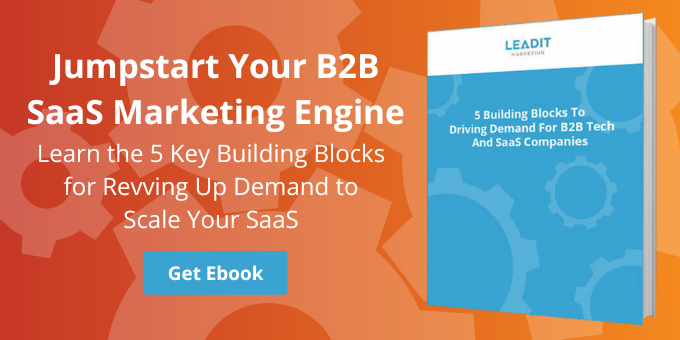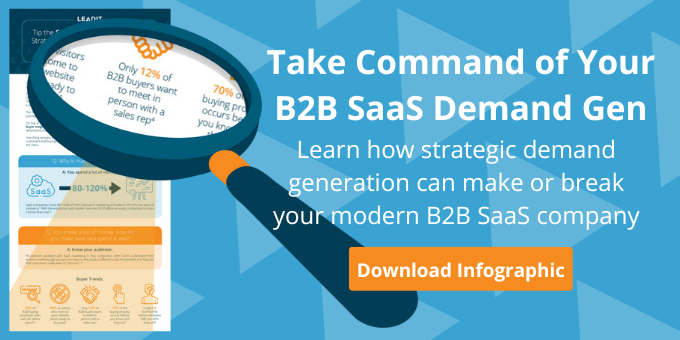Buyer Personalization: The B2B Buyer Journey is Unique. Keep it Personal.
Marketers are evolving how they use buyer personas to drive a more focused and personalized buyer experience. What we know is each person has their own unique journey that they go through at their own individual pace. Data-driven, personalized marketing enables companies to leverage data in real time to create highly individualized buyer experience.
We’ve talked before about buyer insights and buyer personas. As marketers, we’re on a constant quest to learn as much as possible about our customers. A new term, “buyer personalization,” describes the emerging process of activating detailed, persona-driven data in marketing.
Personalization takes you beyond conjecture, with real data about customer behaviors. Traditional persona-based marketing uses both firmographic and psychographic data to form a composite description of your target customer. Access to intent data now gives you an inside view into customers’ likes, wants, and real-world activity.
Personalizing is how you use data to create an experience.
Marketing automation platforms manage your marketing leads, capture the data of your customers and perform valuable analytics on that data. These platforms have varying capabilities. They include information on demographics, business size, industry segment and predicted purchasing behavior.
A buyer’s purchasing decision is dynamic and dependent on several real-time factors that can’t be as easily identified.
A personalized marketing experience is created using data to respond to customers’ exact needs at the right moment in time. It uses cues based on their browsing behavior and other data collected both on and offline. These insights help you determine what stage they’ve reached in their buyer’s journey, and what messages they should be hearing from you at that moment.
How to capture personalized marketing data
When developing buyer personas, trained interviewers delve deep in one-on-one sessions with small samples of actual buyers to gather buying insights about:
- Triggering circumstances that made them start looking for this type of solution
- Success factors and what goals they’re looking for in their purchase
- The internal buyer’s journey that’s going on for prospects as they evaluate various solutions
- Negative factors may be influencing the decision process, including any that may be deal-killers
- Product features they do and don’t need, and why
To name a few.
Unless your company already has people who are highly skilled at interviewing –and available for marketing support duty – this is not a task we advise you should take on internally. The accuracy of the information collected relies heavily on nuanced, person-to-person interviews where the buyer’s actual voice cues can be taken into account.
Putting marketing data and buying insights into action
- Start by building out your basic target segments using: demographics, business size, industry segment and predicted purchasing behavior. You can use your existing marketing database or list building services.
- Then take that basic demographic and firmographic information, and cross-reference it with the additional data sources that capture triggering behaviors (downloading relevant white paper content, for example, seeing what competing websites they’ve visited, or what kinds of search queries they’re using).
- Apply this enriched customer data to set triggered actions within your marketing automation tool to create personalized marketing campaigns that speak directly to what you know they’re interested in, right now.
Measure and optimize
Start small to minimize the effect of any mistakes you might make the first time out of the gate.
Targeting your customers with one-to-one, actionable campaigns will allow you to engage with them more directly than you ever could with segment-based personas.
Not only that, but armed with this level of detail you can more easily determine who your serious buyers are, and how ready they may be to make a purchase sooner rather than later. This allows you to prioritize where you focus your marketing efforts.
Says Adele Revelly of the Buyer Persona Institute, “[Traditional inbound marketing] lacks a fundamental understanding of the person you’re selling to. Spraying out marcom language creates more gaps than it closes. Window shoppers don’t usually end up buying. When you’re not listening to the buyer’s voice in the negotiation, you lose their interest and they’re likely to move on.”
This is especially true for B2B marketing, where you’ve got to keep interest going over an often much longer sales cycle than with B2C.
Rinse and repeat
The goal is to make it a replicable model because understanding more about buyer behaviors and motivations enables you to organize your inbound and outbound marketing assets in a more targeted way.
We help clients navigate through the increasing complexities of running B2B digital marketing campaigns, from selecting the right technology to fully planned and executed campaigns that include the use of a personalized buying experience. Let us know if you could benefit from some B2B marketing experts to help transform your business.











